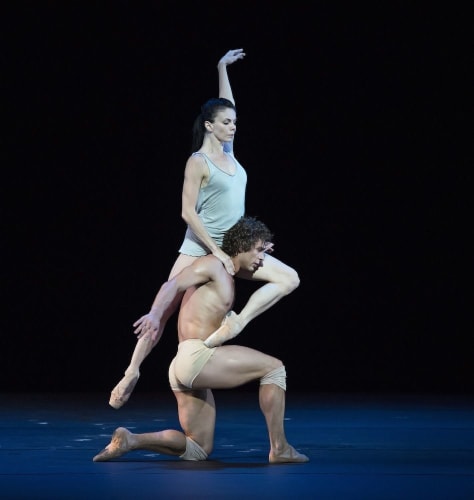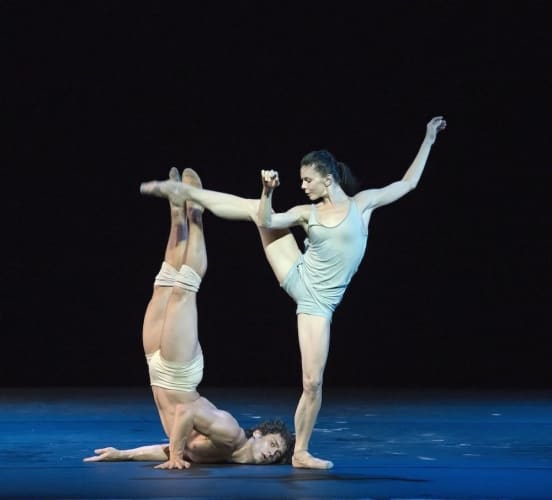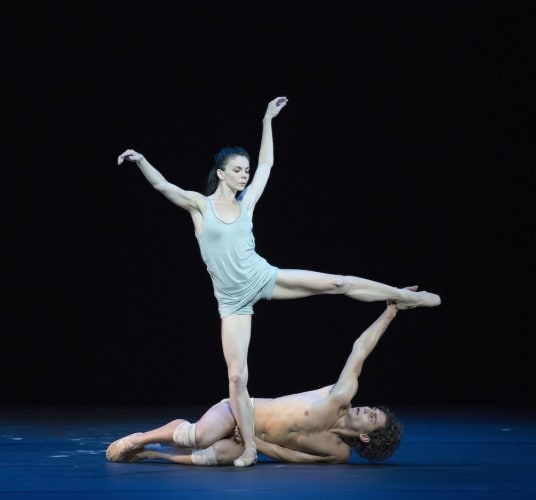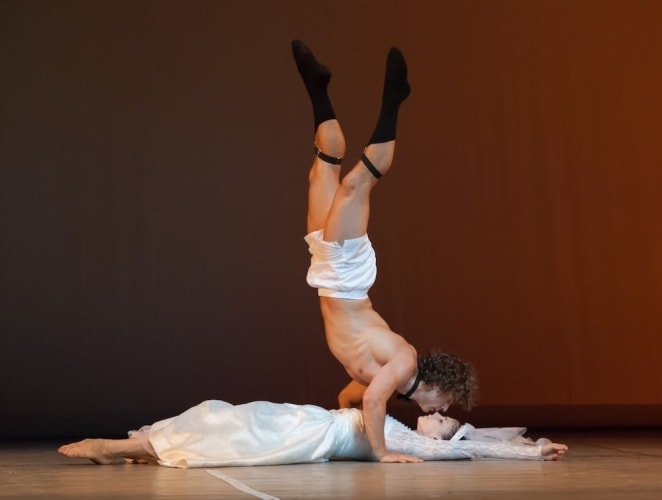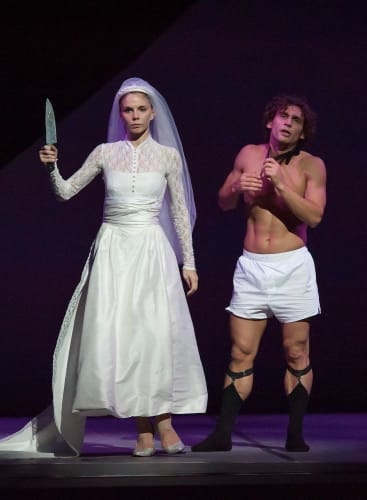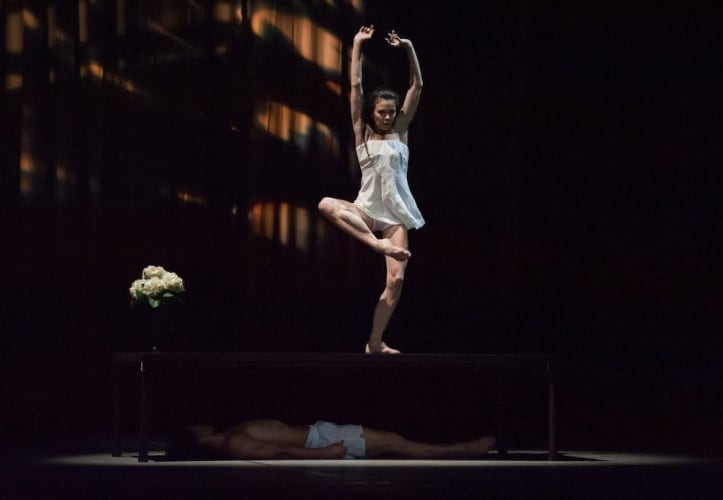Last week the Coliseum saw 49-year-old Sylvie Guillem and 53-year-old Russell Maliphant showing what classically trained bodies can do with contemporary dance at an age when many are hanging up their dancing shoes, in exquisite display.
This week, another dazzling couple takes Coliseum centre stage for only four performances. Ballet superstars Natalia Osipova and Ivan Vasiliev have also chosen rather prematurely to dip their toes into contemporary dance. In their mid to late twenties, this is most unusual. And not easy on the body.
They have the world at their feet—she a Principal with the Royal Ballet, he a Principal with American Ballet Theatre, as well as guesting all over the world—but curiosity, enthusiasm, and ambition can lead to challenging waters.
Sidi Larbi Cherkaoui’s Mercy (compassion) opens with fisticuffs and martial / marital blows underpinned by Heinrich Schütz and Johann Hermann Schein’s ecclesiastical music. A litany of violence: head butts and an astonishing throttling neck lift. She kicks him off and dances an exorcising solo, acrobatic, supple.
The tables turn, and he’s the one on the floor now, her pointe shoes caressing his torso. Reconciliation follows—Vasiliev is the snake charmer manipulating without touching. She is pliable, pliant. The lion lies down with the lamb, two bodies curled up as one.
Ohad Naharin’s Passo is primitive, earthy, grounded. Maybe not to everyone’s taste this Gaga movement language of his, using all the senses to explore the body and mind, but Osipova and Vasiliev dare to take it on.
Beautiful classical lines gone, all is stripped back to basics. Fingers twitch, heads thrust, bodies sink into deep ugly squats, and swim through viscous space. She leads, he copies. Until they meet in awkward embrace.
Is this evolution? Autechre’s digital music, its sci-fi bleakness, bypasses the human—the body is ultimately a machine, not pretty but tough, Osipova’s spine so supple and strong.
But when Greensleeves folk music takes the place of ethereal sounds, the movements remain clumsy. He is still doing duck waddles and simian squats, but he manages to catch her in fearless winged flight. Beauty, brains and brawn? They turn into happy playful children.
Little playfulness, though plenty of dark humour, in Pita’s Lorca-esque Facada (stab or thrust): adapted specially for Osipova and Vasiliev from his original piece God’s Garden, it is great fun.
Fabulous original music by Frank Moon, Phil King and Portuguese traditional fado, played live by Frank Moon, is so close to the soul it could be Russian. The two dancers must feel it in their bones.
The story is simple. Groom takes fright, flees ripping off his suit as he vaults off the stage. Veil trailing jilted Bride strides and stomps, weeps buckets—literally—which water the florist’s flowers (God’s garden?). And takes revenge. “In Portuguese a knife is called a faca”.
Her bittersweet revenge is played out in storybook wish fulfilment style. He returns, and she cuts off his bow tie. Down to boxer shorts, shoes and socks with suspenders, he is in her hands, and what won’t she do to him.
Elvis Presley sings Love Me Tender, as she manipulates his jaw line for line. A love duet follows, but he, the puppet doll, slows down and stops.
She dances on his body, feet stabbing, snaps his neck in a dangerous embrace, and dances a ‘fuck you’ facada dance on his grave—a table moved with the help of The Lady in Black.
In elegant black cocktail dress, high black stilettos Elizabeth McGorian’s (Principal Character Artist of The Royal Ballet) walks across the stage, deadpan face to audience, give me the most pleasure. The Lady in Black has seen it all before. And she provides the knife—after she’s used it as a lipstick mirror.
To fado song and powerful drumbeats, sexy, triumphant, the Bride plunges the knife into a pot of flowers, killing love dead, and walks away trampling the white silk backcloth as she goes. The Queen of the Wilis has had her way. Memories of Osipova and Vasiliev’s Giselle lie in shreds.
An interesting experiment, of course I hope they do more. Osipova says she has long admired tonight’s three contemporary choreographers. As have I, but I’m not convinced this marriage works entirely—nor that all the works are these choreographers best.
But the dancing and commitment on all sides can’t be faulted. Osipova’s energy knows no bounds, her formidable fervour and determination, her extensions, her strength and power—his arms round her waist, she can pull her partner’s dead body weight across the stage.
Vasiliev may leap, twist and turn, but his place is always at her feet: this is her night. She leads the charge and what a charge.
Their off-stage romance dissolved into friendship, their on-stage partnership by distance, to give up on a dancing partnership that blew London away in 2013 (The Mikhailovsky Ballet) would be sacrilege. As they say, they know each other’s bodies so well.
